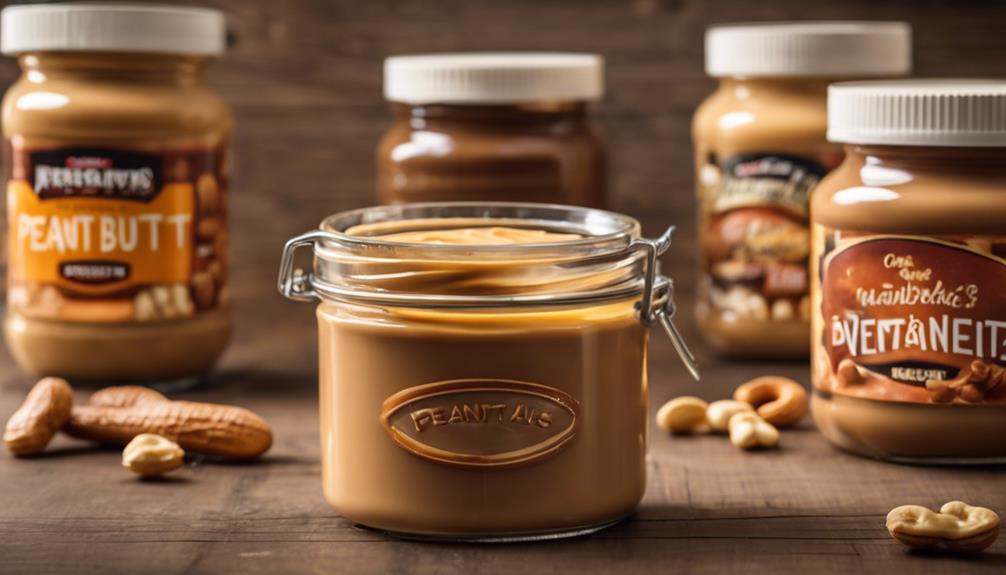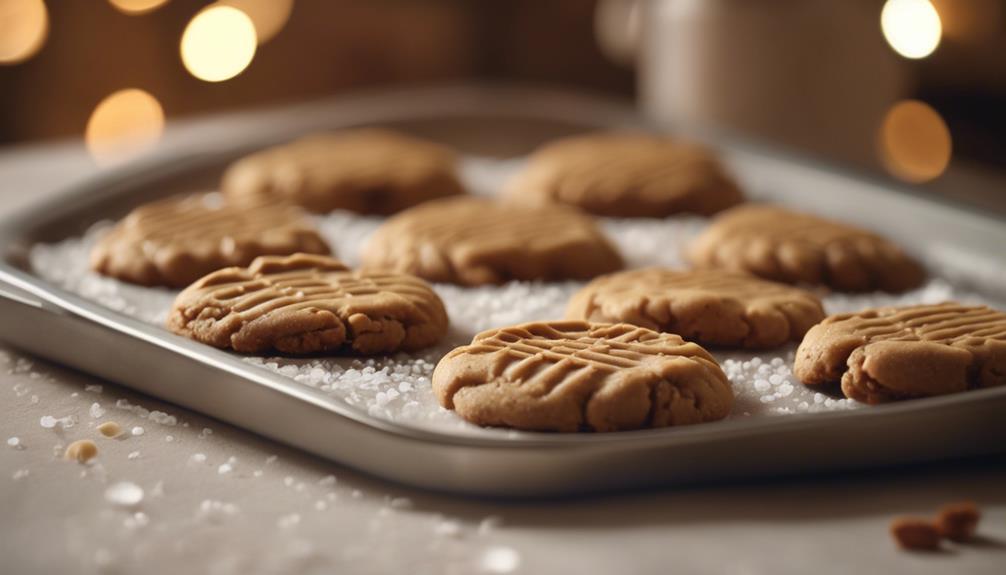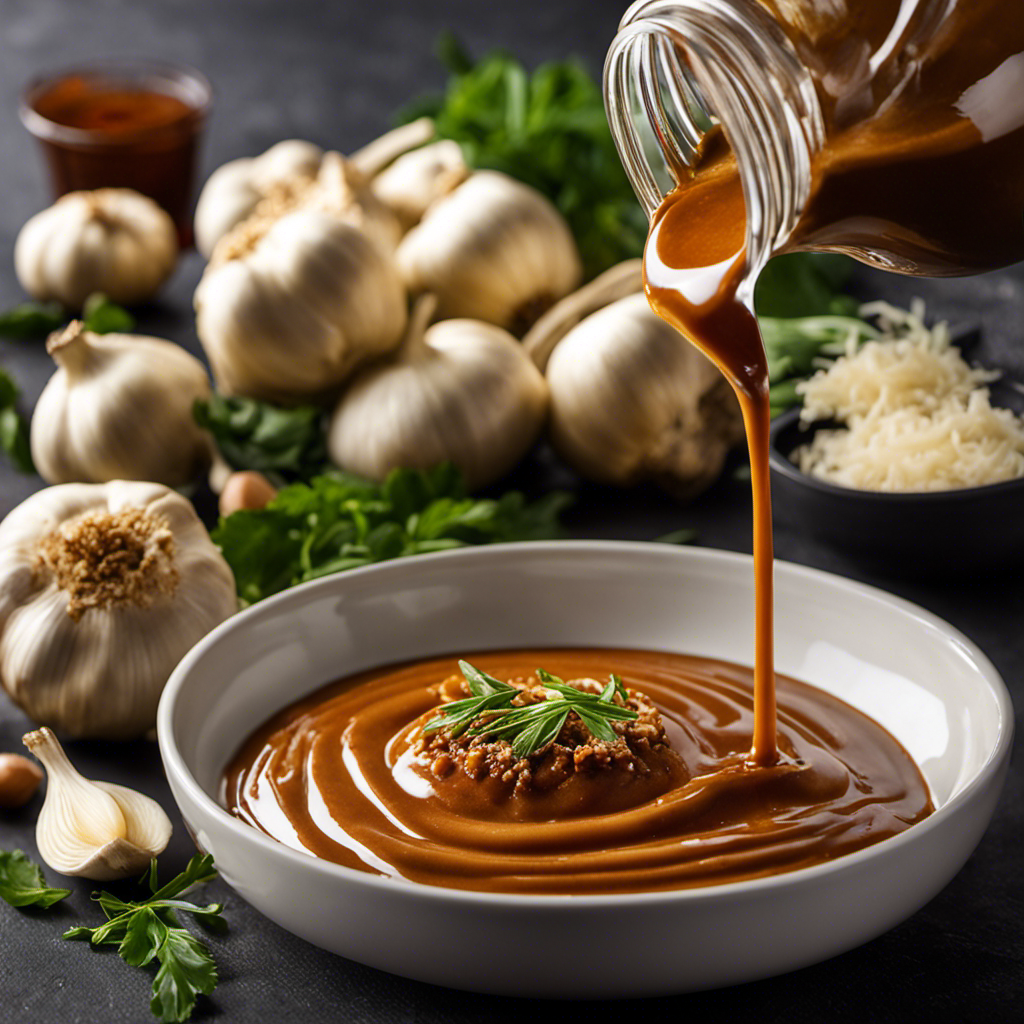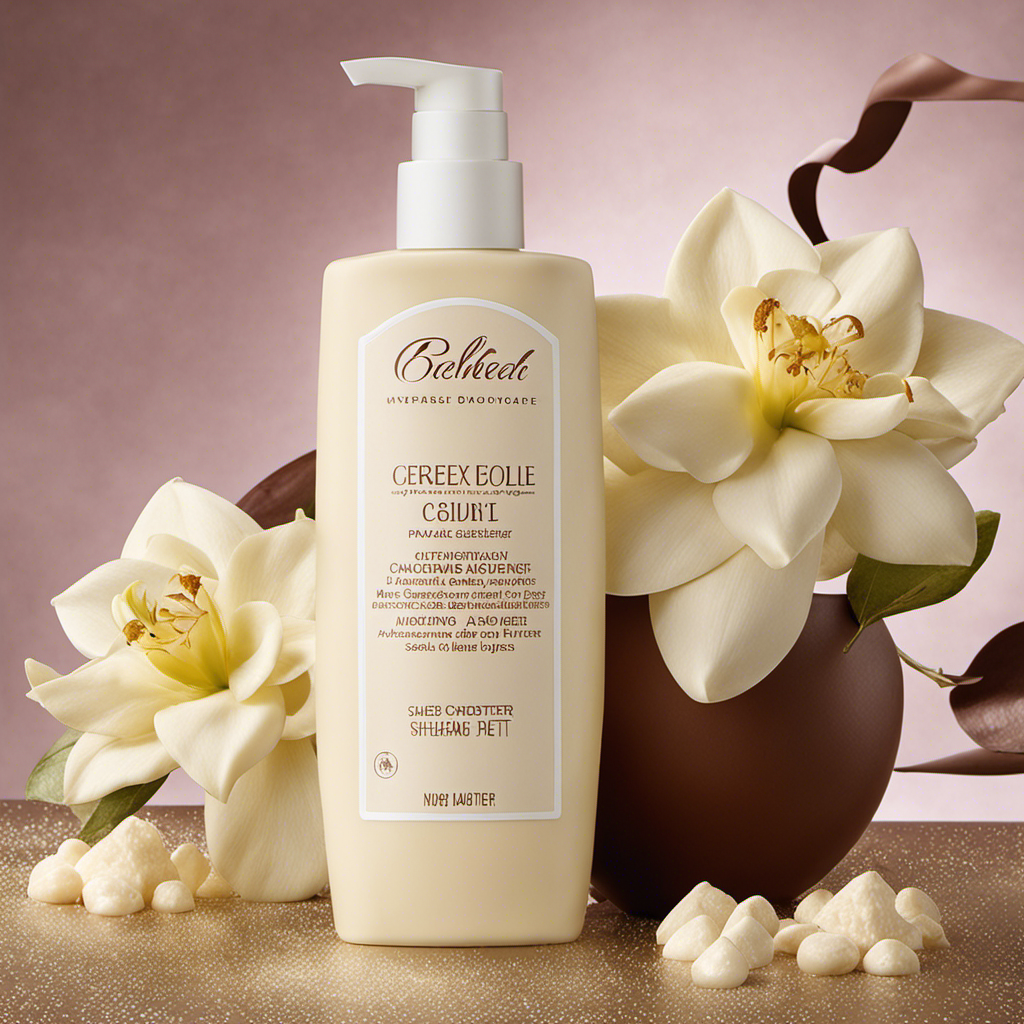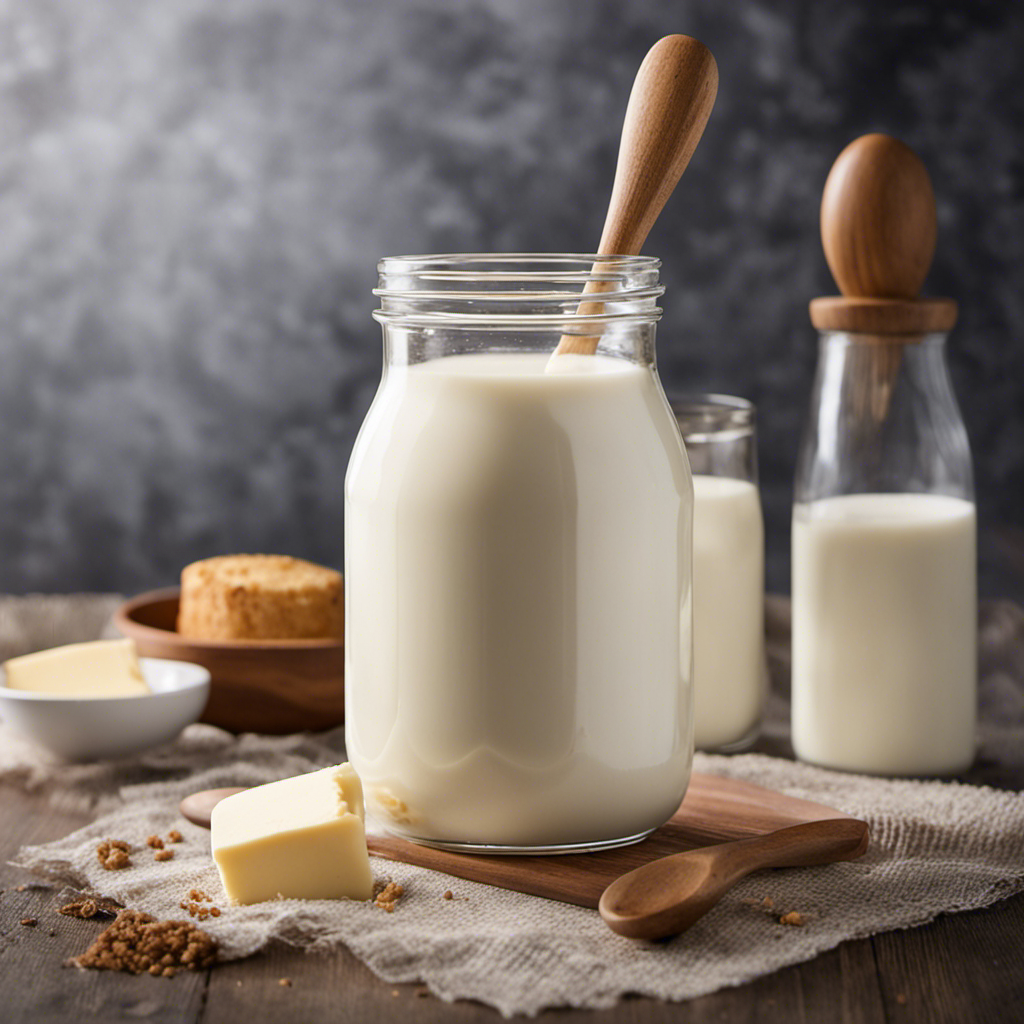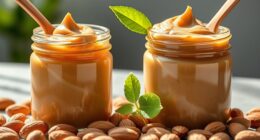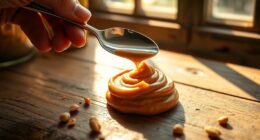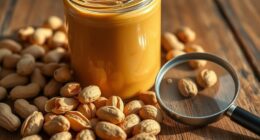Discover the perfect peanut butter recipe for all your needs! Blend roasted peanuts for a smooth butter. Add sweeteners and salt for the right taste. Customize with crunch for extra texture. Use on toast, in smoothies, or granola bars. You'll find more tasty ideas ahead.
Key Takeaways
- Homemade peanut butter for customizable flavors
- Nutty granola bars for a protein-rich snack
- Energy-packed bites for quick boosts
- Crunchy peanut butter flapjacks for convenient snacking
- Versatile uses from spreads to cookies
Homemade Peanut Butter Recipe
To make homemade peanut butter, start by blending roasted peanuts in a food processor until smooth. This step is pivotal as it breaks down the peanuts, releasing their oils to create a creamy texture.
Once you have achieved a smooth consistency, you can add sweeteners like honey or maple syrup, along with a pinch of salt to enhance the flavor. Don't forget to incorporate some crunchy peanuts for that extra bit of texture in your homemade peanut butter.
Using a food processor makes the process quick and efficient, allowing you to customize your peanut butter to your liking. Whether you prefer it more savory or sweeter, homemade peanut butter gives you the flexibility to adjust the ingredients according to your taste.
With just a few simple steps, you can have a delicious batch of homemade peanut butter ready to enjoy on toast, in smoothies, or as a base for nutty granola bars.
Nutty Granola Bars
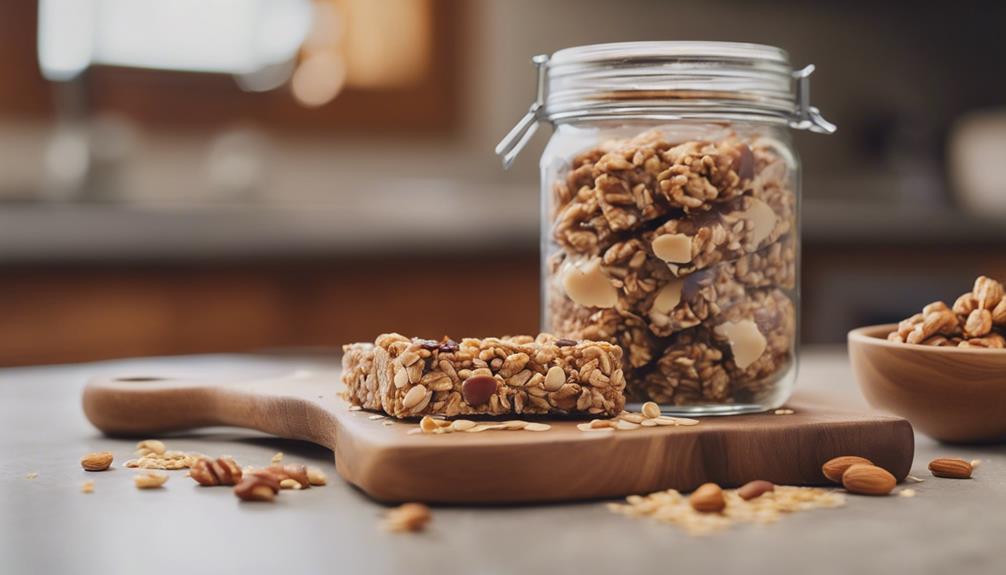
Get ready to tantalize your taste buds with some crunchy granola texture and a nutty flavor explosion in every bite of these Nutty Granola Bars.
These easy homemade snacks are perfect for satisfying your cravings on-the-go or as a quick energy boost during your busy day.
Customize them with your favorite mix-ins for a delicious treat you'll love.
Crunchy Granola Texture
For a satisfying crunch and nutty flavor, incorporate crunchy granola into your peanut butter bars. Peanut butter granola bars strike the perfect balance between the crunchy texture of granola and the creamy richness of peanut butter, creating a snack that's bursting with nutty goodness. These bars aren't only delicious but also wholesome, as they're packed with nutritious ingredients like oats, nuts, seeds, and dates.
The combination of crunchy granola and creamy peanut butter provides a delightful contrast in every bite, making them an ideal choice for on-the-go snacking or as a post-workout treat. You can further customize these bars by adding your favorite mix-ins such as chocolate chips or dried fruit, elevating the flavor profile to suit your preferences.
When you sink your teeth into a peanut butter granola bar, you'll experience a delightful medley of flavors and textures that will leave you craving more.
Nutty Flavor Explosion
Incorporating a nutty explosion of flavor, Nutty Granola Bars offer a wholesome and delicious snacking option packed with oats, nuts, and seeds.
The combination of smooth peanut butter, honey, and a variety of nuts creates a great peanut butter flavor that's both satisfying and nutritious.
These bars are a fantastic source of protein, fiber, and healthy fats, providing sustained energy to fuel your day.
Making these Nutty Granola Bars at home is a breeze, allowing you to customize them with your preferred ingredients.
Whether you're looking for a convenient on-the-go snack or a quick breakfast option, these bars have you covered.
With the perfect balance of sweet and nutty flavors, these granola bars are sure to become a household favorite.
Whip up a batch today and enjoy the delightful taste and nutritional benefits of these homemade treats.
Easy Homemade Snack
Crafting your own batch of nutty granola bars at home is a simple and rewarding way to enjoy a wholesome and delicious snack. These homemade bars offer a perfect balance of nutrition and flavor, combining oats, nuts, seeds, and dried fruits into a satisfying treat.
By incorporating peanut butter, honey, and nuts, you create a rich and delectable taste that's sure to please your palate.
If you're looking to manage your weight, these nutty granola bars can be a great snack option. They provide a good source of protein and fiber, which can help keep you feeling full and satisfied between meals. Additionally, the natural ingredients used in these bars make them a healthier alternative to store-bought snacks that may contain added sugars and preservatives.
Making your own nutty granola bars allows you to customize them according to your preferences, ensuring that you get a snack that suits your taste buds and dietary needs.
Whether you enjoy them on-the-go, for breakfast, or as a pre-workout energy boost, these homemade treats are a convenient and nutritious option for any occasion.
Energy-Packed Bites
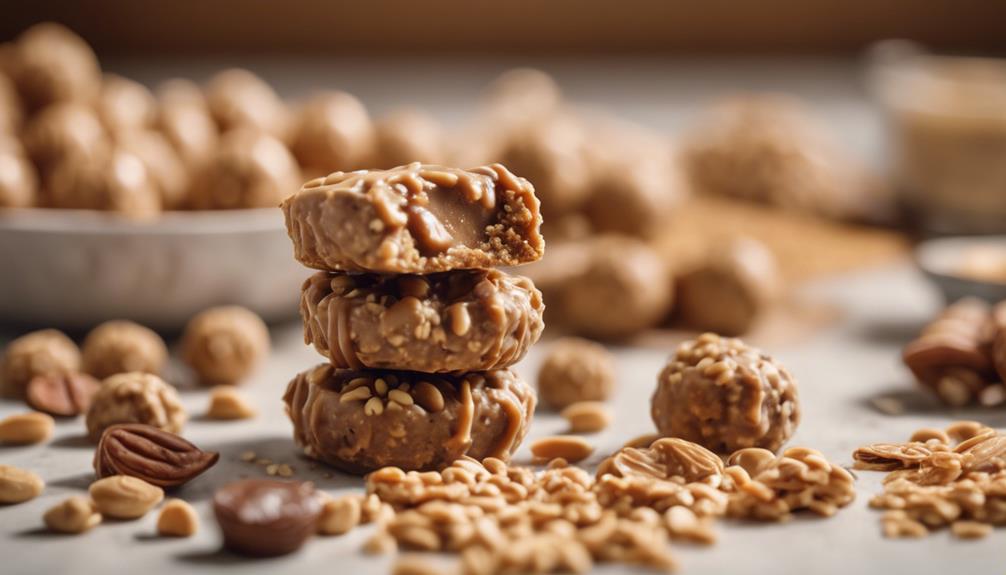
Blending together pecans, peanut butter, date syrup, almonds, and apricots creates these energy-packed bites. These nutritious snacks are a powerhouse of protein, healthy fats, and natural sweetness, making them a perfect option for a quick energy boost.
By simply combining the ingredients and letting the mixture chill in the fridge, you can easily whip up a batch of these tasty treats.
The mix of nuts, seeds, and dried fruits in these energy bites offers a well-rounded blend of nutrients that will keep you energized throughout the day. Whether you need a mid-afternoon pick-me-up or a pre-workout snack, these peanut butter energy bites have got you covered.
Plus, they're a convenient on-the-go option that you can grab whenever hunger strikes.
Indulge in these homemade energy bites as a satisfying treat that not only tastes delicious but also provides the sustained energy you need to power through your day.
Crunchy Peanut Butter Flapjacks
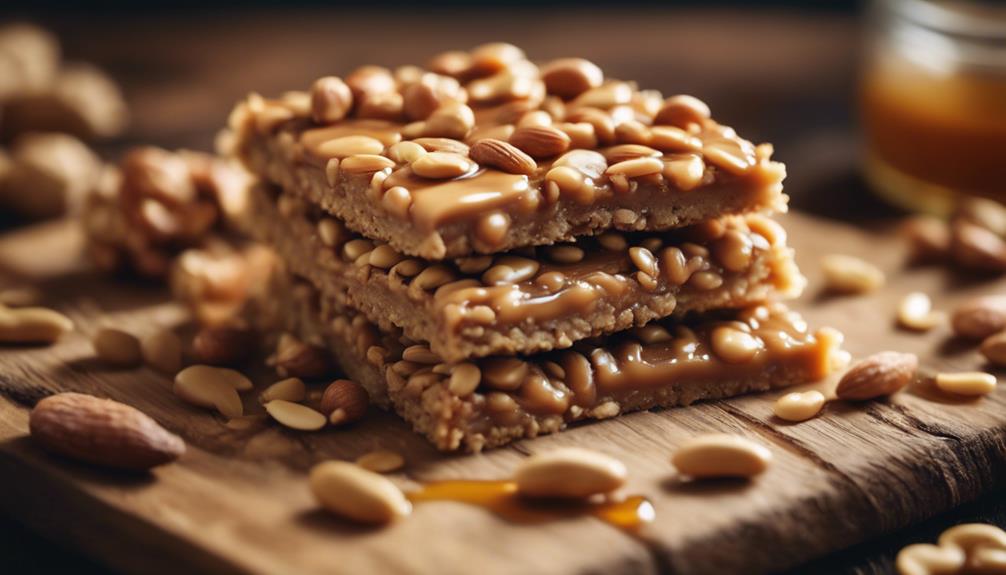
For a satisfying and nutritious snack option, whip up a batch of Crunchy Peanut Butter Flapjacks using whey protein, cashew or peanut butter, malt extract, agave nectar, and oats. These flapjacks are a delicious blend of protein, healthy fats, and carbohydrates, making them an ideal choice for a quick energy boost or post-workout snack.
The recipe yields 10-15 flapjacks, providing you with a convenient and flavorful treat to enjoy on the go or as a pre-workout fuel. To make them, simply mix the ingredients together, spread the mixture on a tray, refrigerate until set, and then slice into individual portions.
With their crunchy texture and nutty goodness, these Crunchy Peanut Butter Flapjacks offer a wholesome and tasty option for whenever hunger strikes. Whether you need a pick-me-up during a busy day or a tasty refuel after a workout, these flapjacks are sure to satisfy your cravings.
Versatile Peanut Butter Uses
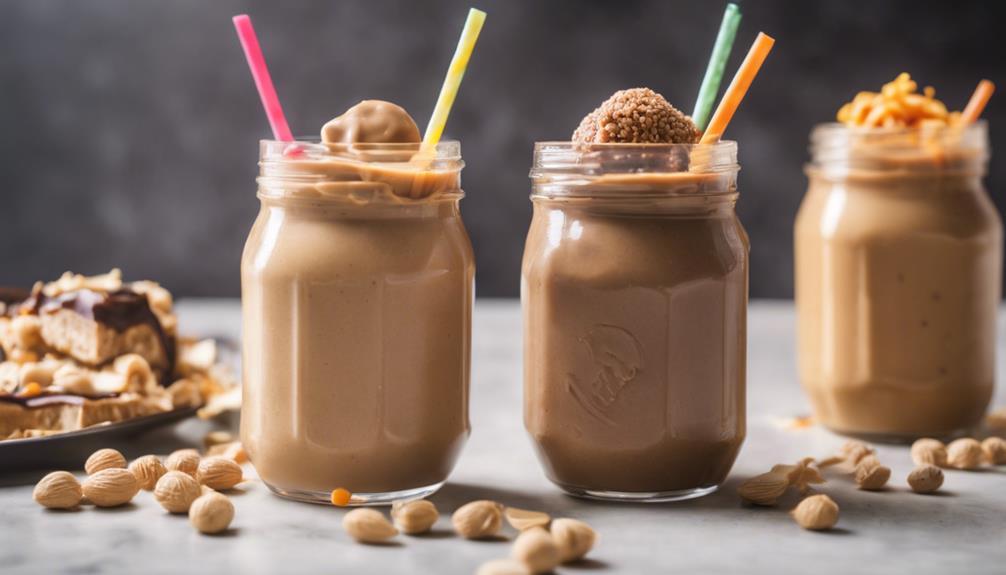
You'll be amazed by the versatility of peanut butter in the kitchen. From enhancing the flavor of savory dishes to adding a creamy richness to desserts, peanut butter can elevate any recipe.
Get ready to explore various recipe variations and enjoy the nutritional benefits this versatile ingredient has to offer.
Recipe Variations
Consider incorporating peanut butter into your favorite recipes for a delicious twist on classic dishes. Try these recipe variations for a creative way to enjoy the nutty goodness:
- Peanut Butter Flapjacks Recipe: A nutritious snack made with whey protein, cashew or peanut butter, malt extract, agave nectar, and porridge oats.
- Peanut Butter Energy Bites Recipe: Quick energy boost bites featuring pecan nuts, smooth peanut butter, date syrup, ground almonds, chopped apricots, and raisins.
- Peanut Butter Granola Recipe: A flavorful and crunchy granola blend of oats, coconut, seeds, dates, peanuts, peanut butter, butter, honey, and apple.
Delight your taste buds with these innovative recipes that incorporate peanut butter in unique ways. Whether you're looking for a post-workout snack or a tasty breakfast option, these variations are sure to satisfy your cravings.
Experiment with different combinations to find your perfect peanut butter-infused dish!
Nutritional Benefits
Incorporating peanut butter into your meals can provide a variety of nutritional benefits due to its rich content of protein, healthy fats, vitamins, and minerals. Peanut butter is high in protein, healthy fats, vitamins E and B6, magnesium, and dietary fiber, making it a nutritious addition to any diet.
It supports heart health, aids in weight management, boosts energy levels, enhances immune function, and promotes satiety, offering a range of health benefits. This versatile ingredient can be used in various ways, such as spreading on bread, adding to oatmeal, or incorporating into recipes like granola bars and energy balls.
You can garnish peanut butter with chopped peanuts, drizzle it with coconut milk, serve it with crusty bread, pair it with a fresh salad, or top it with a sprinkle of paprika for added flavor. With its versatility and nutritional value, peanut butter is a delicious and wholesome ingredient that can be enjoyed in a variety of ways to support overall health and well-being.
Delicious Peanut Butter Cookies

For a classic treat loved by many, search no more than delicious Peanut Butter Cookies. These cookies are a beloved favorite due to their rich, nutty flavor that keeps people coming back for more.
Here are some key points to keep in mind when making or enjoying peanut butter cookies:
- Peanut butter cookies are a classic treat loved by many for their rich, nutty flavor.
- These cookies typically contain ingredients like peanut butter, sugar, eggs, and flour.
- Peanut butter cookies are versatile and can be made chewy, crispy, or soft depending on the recipe.
- Some variations include adding chocolate chips, oatmeal, or even a sprinkle of sea salt on top.
- Peanut butter cookies are easy to make and perfect for any occasion, from family gatherings to bake sales.
With these tips in mind, you're all set to bake up a batch of these scrumptious cookies and enjoy them with your loved ones!
Creamy Peanut Butter Spread
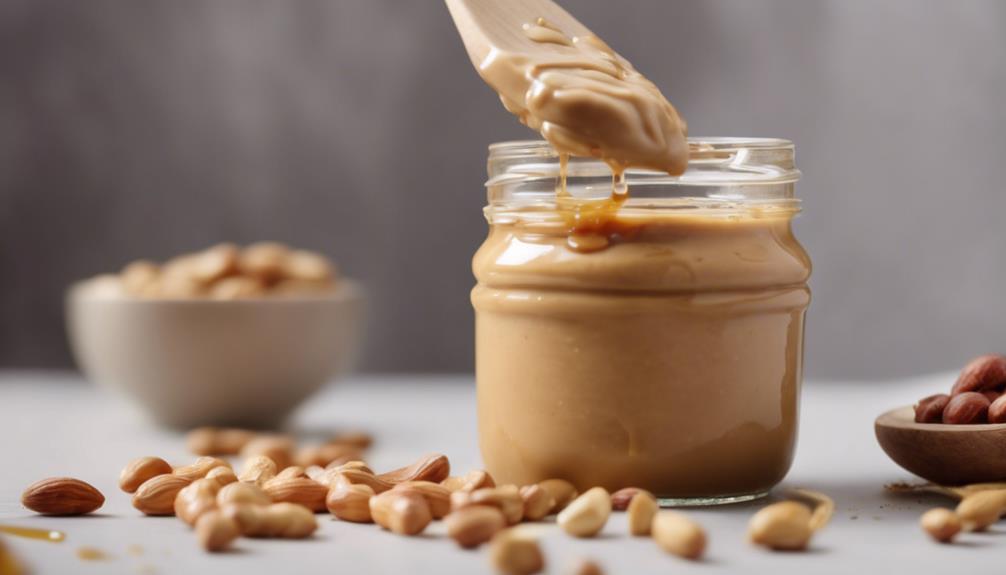
When making creamy peanut butter spread, you'll blend roasted peanuts until smooth and creamy.
You can customize the flavor by adding salt, sweeteners, and oils.
Enjoy spreading it on bread or incorporating it into your favorite recipes for a rich, nutty taste.
Spread Making Process
To create a creamy peanut butter spread, start by roasting peanuts to enhance their flavor before blending them into a smooth paste.
Once you have your roasted peanuts ready, it's time to add a touch of customization. Mix in honey, salt, and a bit of oil to achieve the desired consistency for your peanut butter.
This creamy spread is versatile and can be used in various ways. Spread it on sandwiches, blend it into smoothies, or serve it as a dip for fruits and veggies.
Remember to store your homemade peanut butter in an airtight container in the refrigerator, where it can last for up to 1 month.
With this recipe, you'll end up with approximately 1 1/4 cups of deliciously smooth and creamy peanut butter spread. Enjoy the nutty goodness!
Flavor Customization Options
Enhance the taste of your creamy peanut butter spread by incorporating a variety of flavor options such as maple syrup, honey, or a hint of cinnamon. Experiment with different levels of sweetness and saltiness to find the perfect balance for your taste preferences.
For a savory twist, add a sprinkle of sea salt, or for a decadent treat, mix in dark chocolate chips. Incorporate vanilla extract for a subtle hint of flavor, or blend in some coconut oil for a tropical touch.
If you're feeling adventurous, add a pinch of cayenne pepper for a spicy kick, or mix in shredded coconut for a unique texture. The options are endless when it comes to customizing your creamy peanut butter spread.
Get creative in the kitchen and tailor your spread to suit your individual taste preferences.
Nutritious Peanut Butter Oatmeal

Start your day with a nutritious and filling breakfast by enjoying a bowl of peanut butter oatmeal. This delicious dish combines the protein and healthy fats from peanut butter with the fiber and complex carbs from oatmeal, making it a perfect choice to kickstart your morning.
Here are some reasons why peanut butter oatmeal is a great breakfast option:
- Provides sustained energy
- Keeps you full for longer periods
- Rich in vitamins, minerals, and antioxidants
- Delicious and customizable with toppings like fruits, nuts, or seeds
Peanut butter oatmeal not only tastes fantastic but also offers a range of health benefits to fuel your day. Whether you prefer it plain or loaded with toppings, this breakfast option is sure to satisfy your taste buds and keep you energized until your next meal.
Easy Peanut Butter Recipes

You can easily whip up a variety of delicious peanut butter recipes to satisfy your cravings and fuel your day with wholesome ingredients. From flapjacks to energy bites and granola, these easy recipes are a perfect way to indulge in a nutritious treat using simple ingredients like whey protein, nuts, seeds, and honey.
Whether you need a quick energy boost, a post-workout snack, or simply want to satisfy your sweet tooth, these recipes have got you covered. Customize your peanut butter treats with your favorite add-ins such as dried fruits, coconut, or chocolate chips to add extra flavor and texture.
The convenience of making these homemade snacks allows you to enjoy the goodness of peanut butter while knowing exactly what ingredients are going into your body. So why not try your hand at creating these delectable treats and enjoy the goodness of homemade peanut butter goodness?
Creative Peanut Butter Variations
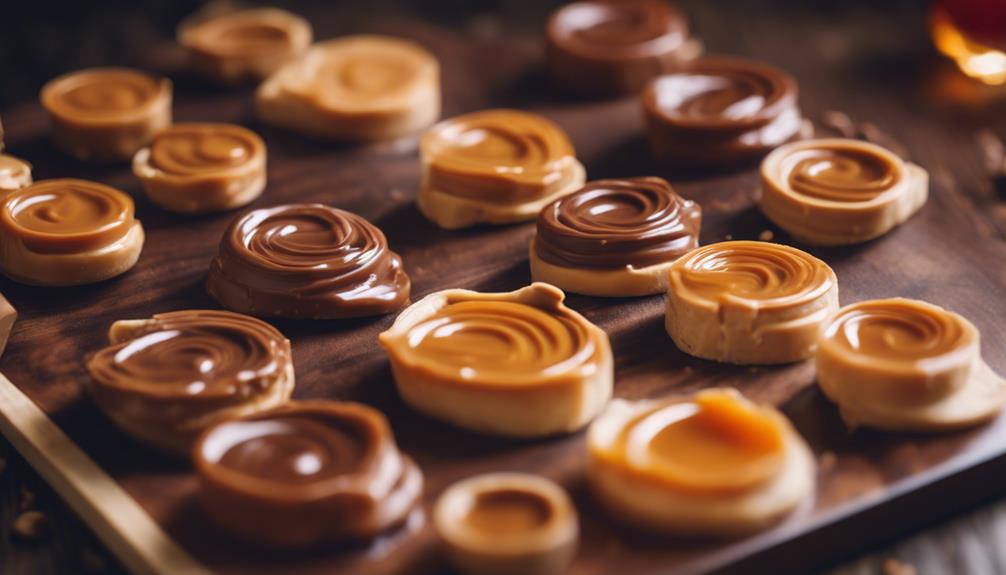
Discover a world of innovative flavors by exploring creative variations of peanut butter, including spicy, chocolate, maple, and cinnamon raisin options. Whether you're looking to add a kick to your sandwiches or a hint of sweetness to your snacks, these unique peanut butter variations can elevate your culinary creations. Here are some ideas to get you started:
- Spicy Peanut Butter: Add some heat to your spreads with a touch of chili or cayenne pepper for a fiery twist.
- Chocolate Peanut Butter: Indulge in a decadent treat by mixing cocoa powder or melted chocolate into your peanut butter for a rich and creamy delight.
- Maple Peanut Butter: Enjoy a taste of sweetness by incorporating maple syrup into your peanut butter for a delightful pancake or waffle topping.
- Cinnamon Raisin Peanut Butter: Embrace warm and cozy flavors by blending cinnamon and raisins into your peanut butter for a comforting spread.
- Flavored Infusions: Experiment with unique infusions like coconut, honey, or espresso to create customized peanut butter flavors that suit your palate.
Frequently Asked Questions
How to Make Peanut Butter Taste Better?
To make peanut butter taste better, enhance it with high-quality Spanish or Valencia peanuts, a touch of sea salt to bring out the nuttiness, a hint of sweetness with maple syrup or honey, a light oil for smoother consistency, and crunchy peanuts for added texture.
Is It Cheaper to Make Your Own Peanut Butter or Buy It?
So, you're wondering if it's cheaper to make your own peanut butter or buy it? Well, spoiler alert – with a little DIY magic and bulk-buying prowess, whipping up your nutty spread can actually save you some dough!
What's the Most Effective Way to Mix a Jar of Natural Peanut Butter?
To mix a jar of natural peanut butter effectively, start by stirring from the bottom up and scraping the sides. Refrigerate it for easier mixing. Use a sturdy utensil like a butter knife or spatula for best results.
Is Homemade Peanut Butter Better Than Store-Bought?
When making peanut butter at home, you control the ingredients, avoiding additives and preservatives found in store-bought options. It's cost-effective, fresher, and allows you to experiment with flavors, resulting in a richer taste.
Conclusion
Indulge in the rich, creamy goodness of homemade peanut butter with these easy recipes. From energy-packed bites to nutritious oatmeal, there's a peanut butter creation for every craving.
So next time you're in need of a nutty treat, whip up one of these versatile and delicious dishes. Your taste buds will thank you for the explosion of flavor, while your body will thank you for the nutritious boost.
Peanut butter perfection awaits!
